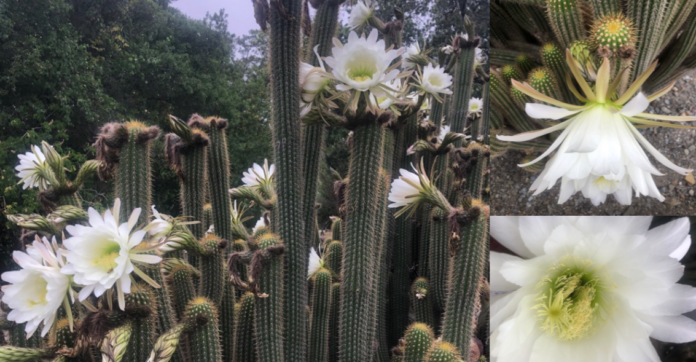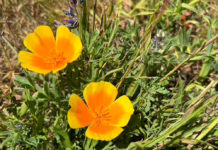This Week in H’burg is a weekly column featuring photos and fun facts from local photographer Pierre Ratté. Each week we’ll feature a new photo from Ratté along with a fact about the subject matter of the photo.
The organ pipe cactus, Stenocereus thurberi, has a special bloom. Once a year, these thorny cacti produce soft, feathery, white blossoms. The plant blooms in the middle of the night. By morning, the blossoms are closing and drying up. The bloom is so spectacular, it is mind-boggling to see them emerge from a foreboding plant, only once a year, in the dark of night, closing and withering in the morning. This species of cactus is found mostly in Mexico, especially in Sonora and southern Baja, where it is adapted to an extremely dry climate. Rare in the United States, it is found here and there, but in great numbers at Organ Pipe National Monument. This monument is in southern-most Arizona, adjacent to the Mexican border and Sonoran Desert. A wilderness site, the area was declared a UNESCO biosphere reserve in 1976, one of 714 bio-reserves in the world.
However, you don’t have to travel to Mexico or Organ Pipe National Monument to see this plant. The picture above, was taken in the Alexander Valley in T. Barney’s sculpture garden, at 6 a.m., in late June, during a massive bloom. Hat tip to Barney for a text alert to this spectacular once a year event. Organ pipe cactus can also be found along the upper reaches of West Dry Creek Road. Perhaps you know of other places around Healdsburg where these unusual and rare plants can be seen? Seen any other rare plants in Healdsburg, let me know.
Fun facts: in Healdsburg, organ pipe cacti are pollinated by bees, but in their hot, native environment they are pollinated by bats; the Spanish name for this plant is: pitaya dulce, because its fruiting body is red and reputed to be as sweet as watermelon; Native Americans harvest the fruit for medicinal purposes; in the desert, these cacti sometimes require a ‘nurse tree’ — another plant that provides shade for the young cacti to survive early years; Stenocereus thurberi live 150 years, and take about 35 years to produce their first blooms when growing in the desert.
Pierre Ratté posts a daily picture on Instagram, Facebook and TodayinHburg.com. He can be reached at pj*****@****ud.com. His book “100 Days Sheltering-In-Place” can be purchased at Levin’s and Copperfield’s bookstores, TodayinHburg.com or Amazon.com.
94
F
Healdsburg
July 11, 2025









